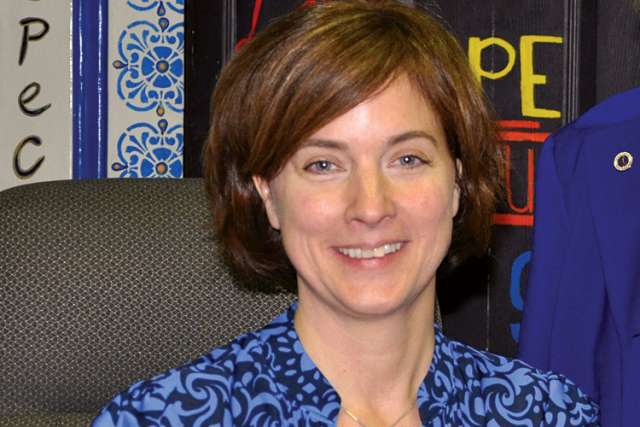“The closer you get to the students the more likely it is that it is going to impact their outcomes,” said Mario Bernardo, president of the Toronto Elementary Catholic Teachers’ union. “You need heat in the building, you need lights, you need people looking after the buildings but the closer you get to the resources that are most immediately connected to the students... it is probably going to have a more significant impact on the outcome. (So) it is not clear to me why they find it acceptable to have the worst ratios amongst Catholic boards... in the province.”
Maximum class size for Grades 4-8 rises from 24.6 to 25.7 for the upcoming school year. Currently the province funds school boards based on a 24.5 classroom size and only provides full funding when a school is operating at 85-per-cent capacity or greater.
“This is a decision that we did not make lightly,” said board chair Jo-Ann Davis. “We decided that providing additional support for JLI (Junior Literacy Intervention) and 5th Block and other literacy and support programs that are proactively helping our students in the early years are important to us so we are continuing to invest in these areas that are not funded by the province. That is kind of the financial reality.”
Bernardo, a former teacher, believes the additional student per classroom will equate to about a five-per-cent workload increase for educators. Without lengthening instructional time that means less time for working one-on-one.
Brian Evoy, provincial president of the Ontario Association for Parents in Catholic Education (OAPCE), said parents consider one-on-one time a critical resource for students.
“It is proven that students improve their learning when they are in a smaller class, especially in the early grades,” he said. “The curriculum has been pushed down so kids in Grade 8 are learning what their parents probably learned in Grade 10 or Grade 11. They need that extra time with the teacher on a one-to-one basis.”
Although both Bernardo and Evoy support smaller class sizes based on the assumption they yield better results for students, a 2009 report by the Canadian Education Association begs to differ — slightly.
“Smaller classes in primary grades have been linked with somewhat better student outcomes, but the evidence is much weaker above the primary level,” read the report which the Ontario Institute for Studies in Education partnered on. “Academic gains for students from smaller classes depend on changes in teaching practices, but smaller classes alone do not necessarily lead to changed teaching.”
OAPCE recognizes the financial reality the board finds itself facing.
“They are in a funding position that is not equitable,” he said. “It comes back to the Ministry (of Education). The Ministry has to make a tough decision on the funding formula and it can’t be a cookie cutter formula because each board is different.”
Davis said a conversation with Minister of Education Liz Sandals regarding funding is necessary.
“We need to have a big discussion,” she said. “But I wouldn’t say the Ministry is putting us in a position where we feel that we are unable to meet the needs of our students. If we felt that we would be the first ones advocating for them and talking to the Ministry as we do regularly.”
Davis noted that the board will be spending about $20 million above the provincial allocations for special needs programming.
“By making those decisions on the ground it has unfortunately meant that we’ve had to put our average up,” she said. “(But) we wouldn’t be making decisions that we thought would be detrimentally affecting our students.”
She also pointed out that a class size of 25.7 is one which has previously been agreed upon by senior staff, the teachers’ union and the Ontario government.
“The fact is that the number that we have got here was a number that the unions themselves agreed to in the last round of collective bargaining, so obviously they must not think it is too bad of a number,” said Davis. “It is also in line with what is set out in the Education Act so both the policy makers and the unions and our senior staff are agreeing that this number is good for students and supports good learning on the ground in the classroom.”
Although Davis understands the concerns, she insisted that you cannot look at only specific areas of a budget.
“You can’t take things out of context,” she said. “It is not just only this number in a table but everything else we are doing for our students.”
As for being last in terms of class sizes, Davis said it is no big deal.
“When you look at the table the difference between largest and smallest is single digits,” she said. “One always wants to be at the top of any table rather than at the bottom of any table but the difference of the top and bottom of this particular table is pretty narrow. We are going to meet the needs of students.”


